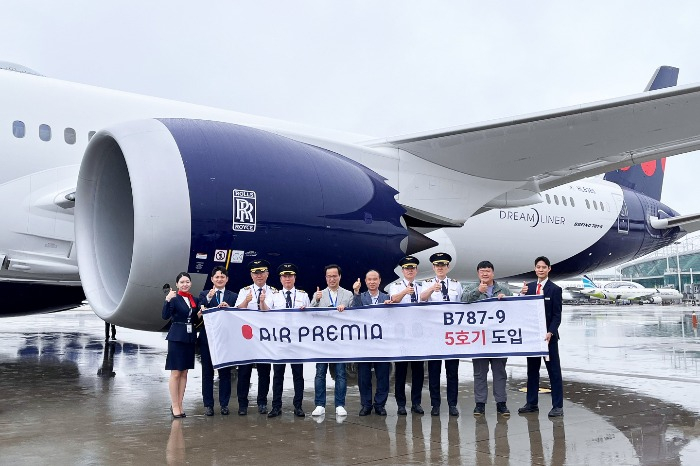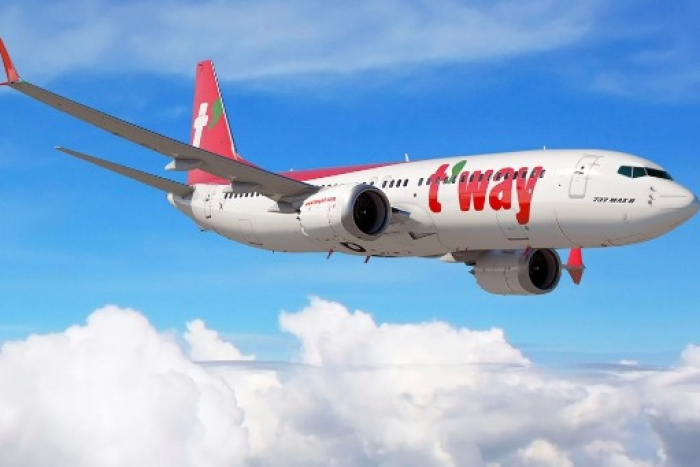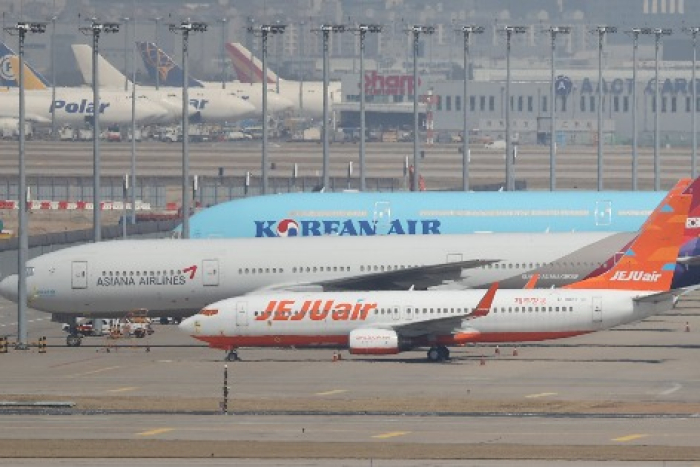Korean LCCs take on flag carriers with long-haul routes
The Korean Air-Asiana merger will likely fuel LCCs' growth after robust profits and fleet expansion
By Jun 07, 2024 (Gmt+09:00)
When in S. Korea, it’s a ritual: Foreigners make stops at CU, GS25, 7-Eleven


Maybe Happy Ending: A robot love story that rewrote Broadway playbook


NPS yet to schedule external manager selection; PE firms’ fundraising woes deepen


US auto parts tariffs take effect; Korea avoids heavy hit


NCSOFT invests in US game startup emptyvessel



From June 11, Air Premia Inc. is slated to launch service to Oslo, Norway, the longest-haul route for a South Korean low-cost carrier (LCC).
The LCC will offer the flight service for just over two months, until August 15, during the "white nights" period in the northernmost Scandinavian country. Still, the move suggests a blurring of the lines between LCCs and full-service carriers.
Homegrown LCCs will likely gain new growth momentum from the forthcoming merger between the country’s two full-service carriers: Korean Air Lines Co. and Asiana Airlines Inc.
By taking over some golden international routes from Korean Air and Asiana’s lucrative cargo business, the LCCs are expected to spread their wings enough to take on their once-unbeatable rivals, said industry observers.
Riding on the revived travel boom after the end of the COVID-19 pandemic, LCCs are expanding their fleet of planes and offering more spacious seating. Some have also introduced premium services, such as premium economy class.
AIR PREMIA
Air Premia, owned by two private equity firms, has focused on short-distance routes such as Japan and Thailand, but offers flights to the US cities of Los Angeles, New York and San Francisco and also to Spain.
“We’re considering launching new long-distance routes after securing two new planes in the second half of this year,” said an Air Premia official.

The pitch in economy class for Air Premia’s mid-to-long-haul flights is 33-35 inches, wider than the average 28-31 inches for LCCs and similar to the 33-34 inches for full-service carriers.
The seat pitch in its premium economy is 42-43 inches.
“We don't have to eat steak on the plane if we are offered spacious and comfortable seats,” said an office worker who prefers to travel on a budget airline.
Last month, another Korean LCC T’way Co. started flying to Zagreb, Croatia after becoming the first domestic LCC to launch a regular route to Australia in December 2022.
“From now on, we may need to compete with LCCs to secure routes and could no longer be the only flag carrier in South Korea,” said a Korean Air official.

In the first four months of this year, LCC users for domestic routes reached 6.61 million, almost double that of full-service carriers during the same period.
During the pandemic period, they performed better than full-service carriers because they focused on long-haul travelers. Last year, a number of domestic LCCs posted record-high profits.
Additionally, their smaller organizations allow them to make quick decisions to keep up with changing travel trends.
Industry observers predict the domestic LCC industry could be consolidated and see the emergence of an LCC behemoth if some of them are put on the market and find new owners.
Write to Jae-Fu Kim and Jung-Eun Shin at hu@hankyung.com
Yeonhee Kim edited this article.
-
 AirlinesKorean Air expects US approval for Asiana merger by end-Oct: report
AirlinesKorean Air expects US approval for Asiana merger by end-Oct: reportJun 03, 2024 (Gmt+09:00)
1 Min read -
 AirlinesMBK, Air Premia team up for Asiana’s cargo unit; Jeju Air exits
AirlinesMBK, Air Premia team up for Asiana’s cargo unit; Jeju Air exitsApr 25, 2024 (Gmt+09:00)
3 Min read -
 AirlinesT’way, Air Premia to take off with Korean Air-Asiana merger
AirlinesT’way, Air Premia to take off with Korean Air-Asiana mergerFeb 14, 2024 (Gmt+09:00)
2 Min read -

-

-
 AirlinesJeju Air to buy 40 fuel-efficient Boeing passenger planes
AirlinesJeju Air to buy 40 fuel-efficient Boeing passenger planesAug 16, 2023 (Gmt+09:00)
1 Min read -
 AirlinesBudget carriers turn around with highest-ever profits in Q2
AirlinesBudget carriers turn around with highest-ever profits in Q2Aug 08, 2023 (Gmt+09:00)
2 Min read -
 AirlinesOccupancy rate of S.Korean LCCs for int’l flights hits 87%
AirlinesOccupancy rate of S.Korean LCCs for int’l flights hits 87%Jul 20, 2023 (Gmt+09:00)
1 Min read -
 AirlinesJeju Air becomes 1st S.Korean LCC to surpass 100 mn passenger mark
AirlinesJeju Air becomes 1st S.Korean LCC to surpass 100 mn passenger markJul 03, 2023 (Gmt+09:00)
1 Min read -
 AirlinesNumber of travelers on S.Korea's LCCs jumped 104-fold in Q1
AirlinesNumber of travelers on S.Korea's LCCs jumped 104-fold in Q1Apr 25, 2023 (Gmt+09:00)
1 Min read -
 AirlinesT’way Air becomes first local budget carrier to fly Incheon to Sydney
AirlinesT’way Air becomes first local budget carrier to fly Incheon to SydneyDec 26, 2022 (Gmt+09:00)
1 Min read -
 AirlinesKorean Air to buy rival Asiana in $1.6 bn deal to emerge as world’s 7th airline
AirlinesKorean Air to buy rival Asiana in $1.6 bn deal to emerge as world’s 7th airlineNov 16, 2020 (Gmt+09:00)
5 Min read


